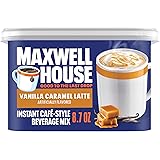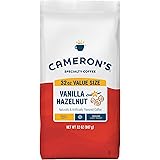Mastering Homemade Espresso Without a Machine: The Ultimate Guide
Many coffee lovers dream of enjoying rich, flavorful espresso right in their own kitchens, but the thought of investing in an expensive, bulky espresso machine can often deter them. The complex process and high cost associated with traditional espresso brewing can seem like a significant hurdle for those simply seeking a daily dose of luxurious coffee. Fortunately, a truly superb espresso can be made with surprising ease and simplicity, allowing anyone to savor a café-quality beverage without any specialized equipment. As demonstrated in the insightful video above, achieving a delicious homemade espresso without a machine is not only possible but remarkably straightforward. This guide delves deeper into the techniques shown, ensuring a perfect cup every time.
The quest for that perfect shot of espresso, characterized by its intense flavor and rich crema, often leads people down the path of expensive machinery. However, this is not always necessary. A method exists that simplifies the process, making it accessible for any home barista, regardless of their equipment or prior experience. This approach emphasizes quality ingredients and precise steps, proving that luxury coffee can indeed be a hassle-free experience. Preparing an exceptional shot of espresso at home can be done in mere moments, transforming a regular coffee break into an indulgent ritual.
Understanding the Essentials of No-Machine Espresso
Before diving into the step-by-step process, it is helpful to understand the core principles that enable a rich, machine-free espresso. Traditionally, espresso involves forcing hot, pressurized water through finely ground coffee. The method highlighted in the video cleverly bypasses the need for high pressure by focusing on ingredient quality and a specific preparation technique that encourages the formation of crema. This ingenious approach relies on a combination of heat management and careful emulsification of coffee oils, resulting in a beverage that rivals machine-made counterparts in taste and appearance. It is a testament to the fact that sophisticated flavors can be achieved through simple means.
1. The Crucial Role of a Heated Cup
First, it is imperative that the brewing vessel is properly prepared. As seen in the video, the initial step involves rinsing the cup with hot water. This seemingly minor action plays a significant role in the overall quality of your homemade espresso without a machine. An adequately warmed cup prevents the immediate cooling of the espresso, preserving its optimal temperature and ensuring that the delicate flavors are not shocked or dulled by a cold container. This thermal stability is often underestimated but is critical for maintaining the espresso’s aromatic complexity and rich taste, allowing for a truly enjoyable experience from the first sip to the last. Studies on coffee consumption have consistently shown that temperature significantly impacts perceived flavor.
2. Selecting the Right Coffee for an Authentic Experience
Second, the selection of your coffee is paramount to achieving a luxurious espresso. While specific brands like Nilgiris Organique, Vilasita, Malabar, or Brezé are mentioned in the video, the key takeaway is to choose a high-quality, finely ground coffee designed for espresso-style brewing. The fineness of the grind directly impacts the extraction process and the ability to create that coveted crema. A medium-dark roast is often preferred for its robust flavor profile, which holds up well in a concentrated espresso shot. Freshly ground beans, if accessible, will always yield the most vibrant flavors and aromatic qualities, elevating your machine-free espresso to new heights. The type of bean, whether Arabica or Robusta, also influences the flavor, with Arabica known for complexity and Robusta for a richer crema.
3. The Magic of Crema: Frothing to Perfection
Third, the creation of crema is where the artistry of this method truly shines. Approximately 5 ml of the chosen coffee is added to the heated cup. This small amount is then rigorously frothed until a rich, smooth crema begins to form. Crema, the reddish-brown emulsion that sits atop a well-made espresso, is composed of microscopic bubbles of CO2 gas, suspended coffee oils, and finely ground coffee solids. Its presence is a visual indicator of a fresh, well-extracted shot, and it significantly contributes to the espresso’s mouthfeel and lingering aroma. The vigorous frothing action helps to aerate the coffee, encouraging the emulsification of oils and creating the desirable texture and appearance of a traditional espresso shot. This step is what truly defines your homemade espresso without a machine.
4. Completing the Brew with Precision
Fourth, once a satisfactory crema has been achieved, the remainder of the coffee pod or the full measure of your fine ground coffee (if not using pods) is introduced. Following this, really hot water from a kettle, about 25 ml (0.9 oz), is carefully added to the cup. The precise temperature and quantity of water are crucial here, as they dictate the final concentration and temperature of your espresso. Water that is too cool will result in under-extraction, leading to a sour taste, while water that is too hot can lead to over-extraction and a bitter flavor. Maintaining the ratio of roughly 1:5 for coffee to water, as indicated by the 5ml coffee and 25ml water measurements, is a guiding principle for achieving optimal balance and intensity in your machine-free brew. This deliberate addition allows the coffee to fully express its potential, creating a harmonious blend of flavors.
5. The Optional Touch: Heating for the Extra Warmth
Finally, for those who prefer their coffee exceptionally hot, a brief visit to the microwave can be incorporated. Zapping the prepared cup for just two or three seconds will elevate the temperature without scalding the espresso, ensuring it reaches your preferred warmth. This optional step highlights the flexibility and customization inherent in this machine-free method. It ensures that personal preferences for serving temperature are met, enhancing the overall enjoyment of your expertly prepared espresso. This brief heating period maintains the integrity of the delicate coffee flavors while providing that extra touch of warmth that many coffee enthusiasts appreciate, making your homemade espresso without a machine perfectly tailored to your liking.







